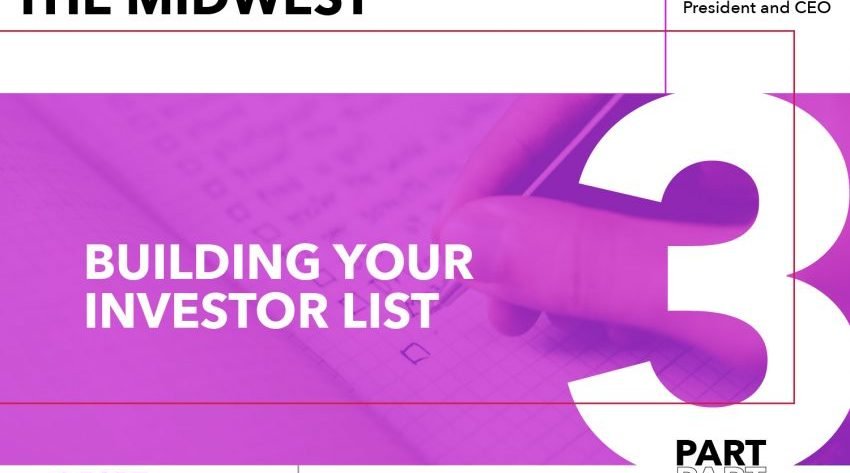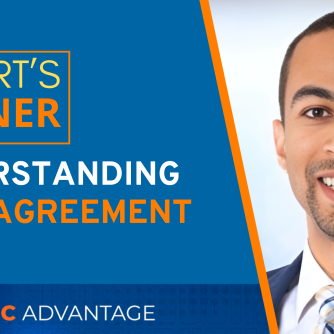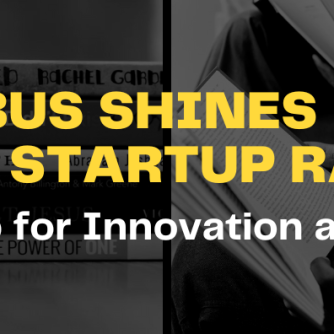Institutional Funding/Venture Capital – Building Your Investor List – Tom Walker, Rev1 Ventures President and CEO
Note: “Rules for Startups Raising Capital in the Midwest” is a multi-part Entrepreneur Toolkit series based on Rev1 Ventures Capital Access Learning Lab. We suggest you review all sections: Part 1 – Basic Information on Venture Capital, Part 2 – Capital Planning Worksheet, Part 3 – Building Your Investor List, Part 4 – Due Diligence, Part 5 – Investor Outreach, and Part 6 – Deal Terms.
This material is also available in Rev1’s Toolkit eBook – Rules for Startups Raising Capital in the Midwest (download here.)
Sooner or later, you may have to raise capital. This toolkit series offers proven tips and techniques.
Silicon Valley Bank compares the fundraising process to a sales funnel. This mindset provides a practical framework to keep any fundraising process on track. Here are the steps.
- Qualify a list of investors upfront;
- Build relationships early and intentionally;
- Seek the highest quality introduction, and
- Prioritize meetings with investors who can write the first check.
Qualifying and Prioritizing Investors Is Critical
Approach fundraising with a “qualifying” mindset. You don’t want to waste your time talking to the wrong people, and they certainly don’t want to waste time talking to you.
Here are the essential qualifying characteristics for VC and startup deals.
1. Stage: You are seeking funds that invest in your stage of business. (For the Rev1 definition of stages, refer back to Part 1 of this Raising Capital series). “Stage” terminology can be somewhat inconsistent from region to region. Rather than getting tangled in vocabulary, use these two primary questions to define your company’s stage: Do you have a product, customers, and revenue? Do you have a team that can execute in the next stage of development?
2. Location: Nearly 60 percent of VCs invest in companies in the same state. Do the funds you are targeting invest within your geography? Unless you live on the Coasts, the answer is likely not. More than 70 percent of the capital invested in the US in 2019 went to California, New York, and Massachusetts.
There is, however, a growing awareness of investment opportunities outside traditional hubs. Cost advantages, a favourable business climate, robust pipelines of university talent, research institutions’ innovation, plus ecosystem and state support for small businesses are causing VC to rethink heartland opportunities. Significant to VC investors, the Midwest is very capital efficient. Capital efficiency refers to what a startup can accomplish with its funding. It is an advantage to startups that can reach critical de-risking milestones with less funding.
Midwest investors are also in our backyard. They value traction and customer validation, so it can be difficult to raise without revenue. Midwest investors prefer industries in their regions and states—financial services, healthcare, and business-to-business (B2B) platforms and software instead of consumer apps. Startups are NOT constrained to fundraising in the Midwest, but it pays to have realistic expectations and triple the VC research when considering fundraising on the coasts.
3.Demographic: Some VCs focus entirely on founders’ particular demographic (for example, female, Black, Latinx, LGBTQ, minorities, etc.). Other VCs invest broadly but segment select funds to target a particular demographic. Founders for Change lists VC investors from diverse backgrounds and indicates the VC’s demographic focus
4. Sector: VCs tend to invest in industries they know or industries where they have resources and connections. Read the VC’s website to find the firm’s sector focus. The team page and sometimes blogs identify which partners are assigned to which industries and sectors. Crunchbase breaks down a VC’s deals by sector. Check out which person is listed on the funding round to narrow in on the firm’s right partner.
5. Check Size: Does the VC fund write check amounts that fit with your raise and business plan? Venture capitalists typically invest $2MM to $5MM in companies with early revenue and show a pathway to growth and profitability. VCs invest as deal leads, co-leads, or co-investors. Be aware that any funding the company accepts before a VC round (friends/family, debt, angel/seed rounds, etc.) must be appropriately structured.
Additional Qualifying Characteristics
There may be multiple VCs with qualifying characteristics that match your company’s objectives and deal aspects. Refine your prospect list further by assessing the maturity of the fund and the fund’s portfolio companies.
- Fund Vintage Year – When did the VC raise the fund that seems relevant to you? The lifecycle for a VC is 10+ years. The first three to five years of a fund’s lifecycle are typically the new investment years. When your firm needs follow-on capital in subsequent rounds, the best scenario is to raise money from VCs that have already invested in your business. You want to understand whether or not your investors are likely to have “dry powder” in future years.
- Recent Investment Activity – Learn about a VC’s focus and preferences by studying the other companies in their portfolio. Do their deals include companies in your sector? Is there any conflict of interest between your company and any of the current companies? Do you know or have business relationships with the founding teams of any of the portfolio companies?
Create a List of Potential Investors Based on Criteria and Priorities
PitchBook, CB Insights, and Crunchbase are public, fee-based sources of information about VCs. Subscribers can perform an indirect search based on stage, industry, keywords, etc., or search investors directly based on their descript and indicated stage or industry preferences.
Search LinkedIn to find people within your network with connections to particular investors you are trying to reach. Building relationships with other entrepreneurs and starts will help you and they both to leverage connections.
Make it easy for investors to find you with a Crunchbase profile based on keywords and industry terms. Keep your LinkedIn page current, and ensure that your employees have the company listed as their employer on their personal LinkedIn pages.
Your introduction to a VC determines where your company enters a VC’s deal evaluation funnel. A warm intro from another portfolio CEO or a VC’s attorney or CPA, for example, is powerful. Contact via a cold call or a recommendation from another VC who passed on your deal is a neutral approach.
Following a disciplined approach to identifying well-qualified investor prospects will lead to a more effective and efficient fundraising process.







